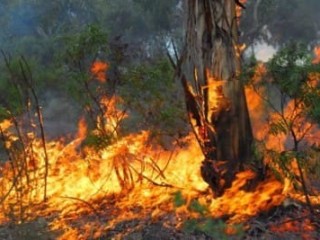 Thought to have been all but extinguished by the former Federal Labor Government, the embers of the alpine grazing debate are being fanned once again as the Victorian Government tests support for the plan under the recently-elected Federal Coalition Government.
Thought to have been all but extinguished by the former Federal Labor Government, the embers of the alpine grazing debate are being fanned once again as the Victorian Government tests support for the plan under the recently-elected Federal Coalition Government.
Earlier this year the Victorian Coalition Government and the-then Federal Labor Government locked horns over the former’s plans to allow cattle back into alpine areas, for the purpose of trialing the role grazing can play in reducing fuel loads and mitigating bushfire risks.
The previous State Labor Government had banned livestock from alpine areas in 2005 in response to complaints from environmental groups that cattle were damaging the environment, ending a 180-year tradition of High Country grazing.
When the State Coalition Government attempted to reinstate grazing for the purposes of bushfire mitigation trials last year, the move met vehement opposition from then Federal environment minister Tony Burke, who argued that it would impose an unacceptable impact on endangered species under the Environment Protection and Biodiversity Conservation Act.
That position was supported by the Federal Court after the Victorian Government attempted to appeal and overturn Mr Burke’s decision.
That seemed to have put the issue to rest but the Victorian Government has since re-fanned the fires by lodging a new application with the Federal Government to run a three-year trial of cattle grazing in the Wonnangatta Valley, wedged between the Mount Buller ski fields, the Great Dividing Range and the Snowy River.
The push has been strongly backed by the Victorian Farmers Federation, which says the Federal Government should fast-track the reintroduction of alpine grazing to Victoria.
The VFF said the proposed trial will see just 60 cattle re-introduced to Wonnangatta Valley, a major downsizing of the Victorian Government’s original and unsuccessful proposal, which was for 400 cattle.
“The issue now lies with the Abbott government,” VFF Omeo Branch President and mountain-cattleman Simon Turner said.
“We are hoping that common sense prevails and that the ecological future of our alpine regions can be protected.
“The former Labor Government’s refusal to revive alpine grazing has damaged the Alps. Not only has it left the area bushfire prone, it has risked wiping out a 200-year-old tradition.
“Since alpine grazing came to an end, fuel loads have reached dangerous levels and valleys have been choked with weeds.
“It’s crucial mountain-cattlemen get their stock back into the region to help manage our Alps.
“The re-introduction of grazing will help re-establish native grasslands in the Wonnangatta Valley.
The Federal Environment Minister Greg Hunt will now have the final decision on whether mountain-cattlemen can return to the high country.
“Let’s hope there is still a future for both the heritage of our cattlemen and the sustainable management of the land,” Mr Turner said.
Can grazing ease blazing?
The issue has proven extremely divisive, pitting not only environmentalists against pastoralists but scientists again scientists.
The debate over whether cattle grazing can play an effective role in mitigating the intensity of bushfires in eucalypt forests has been just as intense as the blazes themselves.
Previous studies including a 2005 report by the Alpine Grazing Taskforce have suggested there is no evidence to show that grazing can reduce the incidence or severity of alpine fires in a statistically significant way, but the Victorian Government has claimed that more research is needed, because previous studies have been too general and have focused on areas that have been too small to provide meaningful or reliable data.
Three environmental scientists from the Universities of Melbourne and Tasmania have added their weight to the debate this week by publishing research that they say demonstrates that cattle grazing does little to reduce Australia’s most destructive bushfires.
Writing about their research on The Conversation yesterday, the scientists said they tried a “natural experiment” to discover whether cattle grazing can reduce blazing.
They surveyed over 11,400 km2 of the Victorian Alps by analysing satellite images of the area and looked at vegetation maps, historical satellite images and studied the extensive areas that have been burned by bushfires in the past eight years since cattle have been banned from the area.
“Using geospatial statistics we found that cattle grazing had no effect on the likelihood of crown scorch in eucalypt forests and woodlands,” the scientists wrote (read their article on The Conversation here).
“This result is biologically plausible given that cattle are grazing animals, not browsing animals – they do not extensively feed on woody vegetation focusing on grasses instead.
“Our study is also consistent with previous ground-based studies that have demonstrated the cattle prefer to graze in grassy areas.”
They said fires in eucalypt forests were usually more intense, driven by high fuel loads on the forest floor, dense forest structure and highly-flammable leaves in the upper canopy.
Such fast-moving forest fires were nearly impossible for fire fighters to control. In comparison, grassland fires were usually much lower in intensity and were easier to control, and grasslands also recovered rapidly after fires.
“Our study does not rule out the use of cattle to manage grassy fuels – this approach may be crucial in tropical savannahs, especially where invasive grasses fuel fires that compromise the ecological integrity of native vegetation.”



HAVE YOUR SAY